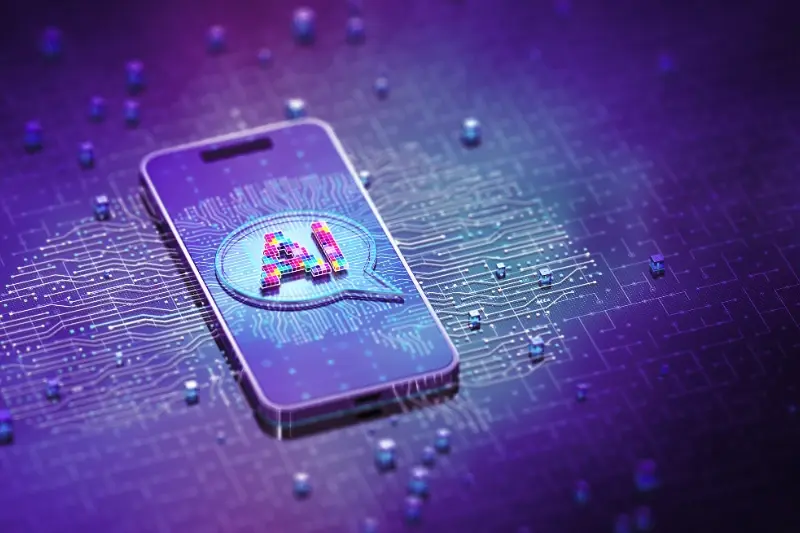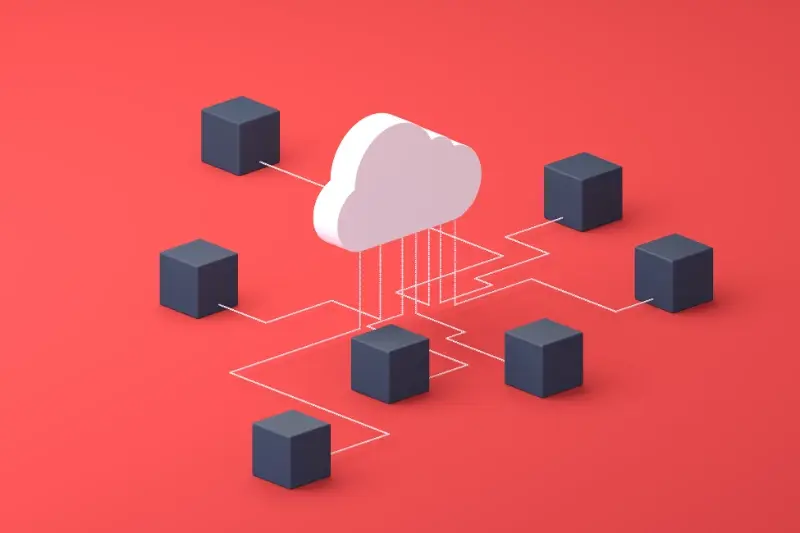The Hidden Complexities of Building a Successful Food Delivery App
Most business owners think building a food delivery app is straightforward—after all, customers order food, drivers pick it up, and everyone gets paid. Simple, right? Wrong. What looks like a basic transaction on the surface actually involves dozens of moving parts working together in real-time, each one capable of breaking the entire system if something goes wrong.
The reality is that delivery apps are some of the most technically demanding applications you can build. They're handling live GPS tracking, payment processing, inventory management, and communication between multiple user types—all while maintaining split-second response times. When I work with clients who want to enter this space, I often see their faces change when we start unpacking what's really involved.
Building a delivery app isn't just about connecting restaurants with customers—it's about creating a complex ecosystem that handles real-time logistics, financial transactions, and user expectations that have been shaped by billion-dollar companies
The complexity goes far beyond the technical challenges too. There are business considerations that catch even experienced entrepreneurs off guard—from compliance requirements that vary by location to ongoing operational costs that can quickly spiral out of control. Understanding these hidden complexities upfront can mean the difference between launching a successful platform and watching your investment disappear into a digital black hole.
Why Simple Food Delivery Apps Are Actually Complex Systems
When most business owners think about food delivery apps, they see something quite straightforward—customers browse restaurants, place orders, and food arrives. Looks simple enough, right? Well, I hate to break it to you, but what appears simple on the surface is actually one of the most complex types of mobile applications you can build.
Behind that clean interface where users tap "Add to basket" lies a web of interconnected systems that would make your head spin. Each order triggers dozens of processes running simultaneously across multiple platforms, databases, and third-party services. The app needs to check restaurant availability, calculate delivery fees, process payments, notify drivers, update inventory, and handle real-time tracking—all whilst making sure nothing breaks.
The Moving Parts Most People Don't See
A typical food delivery app manages several complex systems working together:
- Customer-facing mobile apps and websites
- Restaurant management dashboards and tablets
- Driver tracking and dispatch systems
- Payment processing and fraud detection
- Inventory management and menu synchronisation
- Real-time GPS tracking and route optimisation
- Push notifications and SMS messaging
- Analytics and reporting tools
Each component must communicate flawlessly with the others. When a customer places an order, the system instantly updates restaurant inventory, calculates the best delivery route, assigns a driver, and starts tracking everything in real-time. One small glitch in any part can bring the whole operation crashing down.
The Technical Challenges That Make Development Expensive
Building a delivery app isn't like creating a simple calculator or torch app—the complexity behind the scenes is staggering. I've watched countless business owners underestimate what goes into making these systems work properly, and frankly, I don't blame them. The technical requirements are far more demanding than they appear on the surface.
The biggest cost driver comes from handling multiple moving parts simultaneously. Your app needs to track drivers in real-time, process payments securely, manage inventory across different restaurants, and handle thousands of users placing orders at the same time. Each of these functions requires sophisticated backend infrastructure that can scale up and down based on demand.
Core Technical Requirements
- Real-time GPS tracking and mapping integration
- Push notification systems for order updates
- Payment processing with multiple gateway support
- Database architecture that handles high traffic loads
- API integrations with restaurant POS systems
- Cloud infrastructure with auto-scaling capabilities
The development team you'll need isn't just a couple of programmers either. You're looking at backend developers, mobile developers for iOS and Android, DevOps engineers, and specialists in payment systems. That's before we even talk about the ongoing server costs and third-party service fees that keep everything running smoothly.
Budget for at least 6-8 months of development time with a team of 5-7 developers to build a production-ready delivery app with all the features users expect.
Real-Time Features That Push Apps To Their Limits
Real-time features are where delivery apps get really tricky—and expensive. When someone places an order, they want to watch their food move from the kitchen to their door on a map. Sounds simple, right? Wrong! Making this work smoothly requires some serious technical muscle that most business owners don't see coming.
GPS tracking alone can drain a phone battery faster than you'd believe. Your driver's location needs to update every few seconds, which means constant communication between the app and your servers. Then there's the customer watching their order progress—they want to know when it's being prepared, when it's ready, and when the driver's picked it up. All of this happening at the same time across hundreds or thousands of orders.
The Technical Challenges Behind Real-Time Updates
The infrastructure needed to handle real-time data is expensive. You need servers that can process thousands of location updates per minute without crashing. WebSockets, push notifications, and database synchronisation—these aren't just fancy technical terms, they're expensive systems that need constant monitoring.
- Live GPS tracking that updates every 3-5 seconds
- Order status updates pushed instantly to customers
- Driver availability changes in real-time
- Restaurant capacity updates affecting delivery times
- Queue management for peak hours
The real kicker? All these features need to work perfectly when your app is busiest—during lunch and dinner rushes when server loads are at their peak. One small glitch and customers start complaining about orders that seem to disappear into thin air.
Managing Multiple User Types Creates Hidden Problems
Here's something that catches most business owners off guard—delivery apps don't just serve one type of user. You've got customers ordering food, restaurant staff managing orders, delivery drivers picking up meals, and platform administrators keeping everything running smoothly. Each group needs completely different features and interfaces, which multiplies the complexity exponentially.
Think about what happens when a customer places an order. The restaurant needs to see it instantly, confirm they can make it, and update the prep time. Meanwhile, the system has to find an available driver, calculate the best route, and keep everyone updated with real-time notifications. If any part of this chain breaks down, the whole experience falls apart.
The biggest mistake we see is businesses assuming they can launch with a basic app and add user types later—by then you're rebuilding from scratch
The real challenge isn't just building separate interfaces; it's making sure all these different user types can communicate seamlessly. Restaurant staff need different permissions than drivers, customers need different data than administrators, and everyone needs different notification settings. Each additional user type doesn't just add features—it creates a web of interconnected requirements that makes the entire system more fragile and expensive to maintain.
Payment Systems And Security Requirements Business Owners Miss
Here's something that catches nearly every business owner off guard—payment processing in delivery apps isn't just about taking someone's card details and getting paid. You're dealing with multiple payment flows that all need to work perfectly, and I mean perfectly, because people get very upset when their money goes missing!
Think about what's actually happening when someone orders food through your app. The customer pays you, but then you need to pay the restaurant their cut and the driver their fee. That's three separate transactions that need to happen automatically, often in different currencies or payment methods. Some drivers want cash, others prefer bank transfers, and restaurants might have their own preferred payment schedules.
Security Compliance Costs More Than You Think
The security side is where things get expensive fast. You'll need PCI DSS compliance, which means regular security audits, encrypted data storage, and secure payment processing—all of which require specialist knowledge and ongoing maintenance. Then there's fraud detection, chargebacks, and handling disputes between customers, restaurants, and drivers.
Most business owners budget for a simple "pay and done" system, but delivery apps need robust financial infrastructure that can handle refunds, split payments, and settlement periods. Getting this wrong doesn't just mean unhappy customers; it can mean serious legal trouble and massive financial losses.
The Ongoing Costs That Catch Most People Off Guard
Here's where the complexity of delivery apps really hits business owners hard—after launch. I've watched countless clients celebrate their app going live, only to get blindsided by monthly bills they never saw coming. The problem isn't just the size of these costs; it's that most people don't even know they exist until the invoices start arriving.
Your app needs constant feeding. Cloud hosting costs scale with your user base, which sounds great until you realise that means your bills grow every month if you're successful. Then there's the API fees—maps, payments, SMS notifications—all charge per use. A busy weekend can triple your monthly costs overnight.
The Monthly Bills That Never Stop
- Cloud hosting and database management
- Third-party API usage (maps, payments, notifications)
- App store developer fees
- SSL certificates and security monitoring
- Customer support tools and help desk software
- Analytics and crash reporting services
But here's what really gets expensive—maintenance. Your app isn't a website you can ignore for months. iOS and Android release updates constantly, and if your app breaks because of a system update, you're losing money every hour it's down. Bug fixes, security patches, and performance improvements become a never-ending cycle of development costs.
Budget at least 20% of your initial development cost annually for ongoing maintenance and hosting. This isn't optional—it's the minimum to keep your app running.
Legal And Compliance Issues That Surface Later
Here's something that catches almost every business owner off guard—the legal requirements for delivery apps are mind-boggling. I've seen companies get six months into development only to discover they need completely different data handling systems to comply with GDPR. That's not a small tweak; that's rebuilding core functionality from scratch.
Food safety regulations vary wildly between countries and even cities. Your app needs to handle allergen information, temperature tracking for certain foods, and driver food safety certifications. Miss any of these and you're looking at hefty fines or getting shut down entirely. The documentation alone can take weeks to implement properly.
Data Protection Gets Complicated Fast
When you're handling customer data, driver locations, restaurant information, and payment details all in real-time, privacy laws become a nightmare. Different regions have different rules about data storage, user consent, and the right to be forgotten. Your app needs to be built with these requirements baked in—not bolted on later.
Then there's employment law around drivers, insurance requirements, and local business licensing. Each new city you expand to brings fresh legal challenges. Smart business owners factor these costs into their initial planning, but most don't realise just how complex this web becomes.
Conclusion
Building a delivery app isn't just about creating something that looks good on a phone screen—it's about understanding the massive complexity that sits beneath the surface. I've worked on enough of these projects to know that what seems like a simple idea can quickly turn into a technical nightmare if you don't plan properly.
The business considerations we've covered here aren't meant to scare you away from building a delivery app. They're meant to help you make better decisions from the start. When you understand the real complexity involved—from managing multiple user types to handling real-time tracking, from payment security to ongoing maintenance costs—you can budget properly and set realistic expectations.
Too many business owners jump into app development thinking it's like building a website. It's not. The technical requirements are more demanding, the user expectations are higher, and the ongoing costs are significant. But here's the thing: knowing all this upfront gives you a huge advantage. You can plan for these challenges instead of being blindsided by them six months down the line.
If you're serious about building a delivery app, start with the business model first. Make sure the numbers work even with all these complexities factored in. Then find a development team who understands what they're really building—not just the pretty interface, but the entire system that makes it work.
Share this
Subscribe To Our Blog
You May Also Like
These Related Stories

The Hidden Costs of Adding AI to Your Mobile App

No-Code vs. Custom Development: The Honest Comparison





